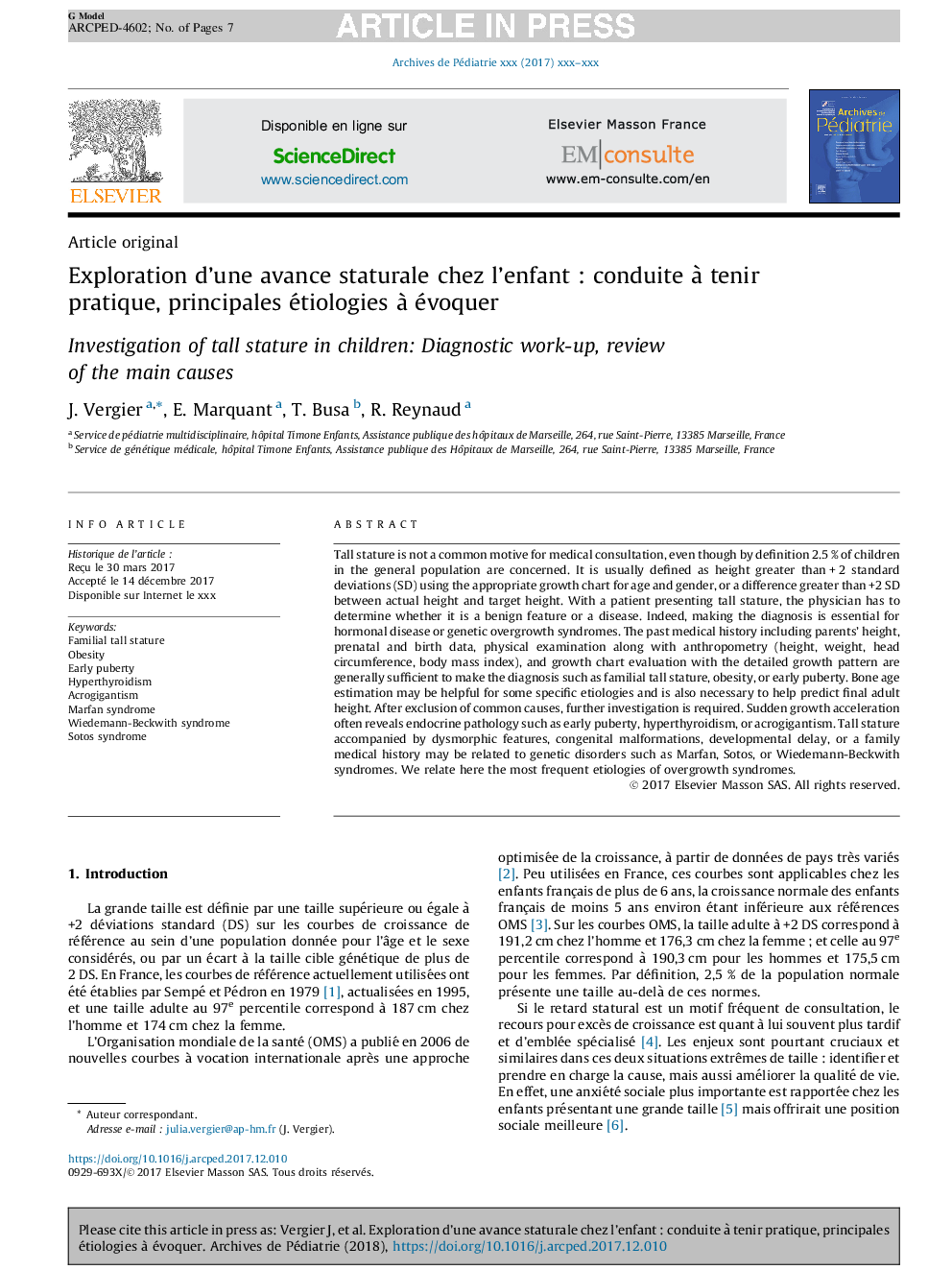| Article ID | Journal | Published Year | Pages | File Type |
|---|---|---|---|---|
| 8809214 | Archives de Pédiatrie | 2018 | 7 Pages |
Abstract
Tall stature is not a common motive for medical consultation, even though by definition 2.5 % of children in the general population are concerned. It is usually defined as height greater than + 2 standard deviations (SD) using the appropriate growth chart for age and gender, or a difference greater than +2 SD between actual height and target height. With a patient presenting tall stature, the physician has to determine whether it is a benign feature or a disease. Indeed, making the diagnosis is essential for hormonal disease or genetic overgrowth syndromes. The past medical history including parents' height, prenatal and birth data, physical examination along with anthropometry (height, weight, head circumference, body mass index), and growth chart evaluation with the detailed growth pattern are generally sufficient to make the diagnosis such as familial tall stature, obesity, or early puberty. Bone age estimation may be helpful for some specific etiologies and is also necessary to help predict final adult height. After exclusion of common causes, further investigation is required. Sudden growth acceleration often reveals endocrine pathology such as early puberty, hyperthyroidism, or acrogigantism. Tall stature accompanied by dysmorphic features, congenital malformations, developmental delay, or a family medical history may be related to genetic disorders such as Marfan, Sotos, or Wiedemann-Beckwith syndromes. We relate here the most frequent etiologies of overgrowth syndromes.
Related Topics
Health Sciences
Medicine and Dentistry
Perinatology, Pediatrics and Child Health
Authors
J. Vergier, E. Marquant, T. Busa, R. Reynaud,
